Content for TS 23.434 Word version: 19.2.0
0…
4…
5
6…
6.4…
6.5…
6.5.3…
7…
8…
8.2.2…
9…
9.3…
9.3.2.21…
9.3.3…
9.3.6…
9.3.11…
9.3.13…
9.3.14…
9.4…
9.4.6…
9.5…
10…
10.3…
10.3.2.22…
10.3.3…
10.3.7…
10.3.10…
10.4…
11…
11.3…
11.3.3…
11.4…
12…
12.3…
13…
14…
14.2.2.2…
14.3…
14.3.2.20…
14.3.2.40…
14.3.3…
14.3.3.3…
14.3.4…
14.3.4.6
14.3.4.7…
14.3.4A…
14.3.4A.3…
14.3.4A.4…
14.3.4A.6…
14.3.4A.8…
14.3.4A.9…
14.3.4A.10…
14.3.5…
14.3.6…
14.3.9…
14.3.12…
14.4…
15…
16…
17…
18…
A
B…
6 Generic functional model for SEAL services
6.1 General
6.2 On-network functional model description
6.3 Off-network functional model description
...
...
6 Generic functional model for SEAL services p. 27
6.1 General p. 27
The functional model for SEAL is organized into generic SEAL service functional model and specific SEAL service functional models. The generic SEAL service functional model will be used as the reference model for the specific SEAL service functional models.
The following SEAL services are supported towards the vertical application layer:
- Location management;
- Group management;
- Configuration management;
- Identity management;
- Key management;
- Network resource management;
- Data delivery;
- Notification management;
- Network slice capability enablement; and
- Application data analytics enablement.
6.2 On-network functional model description p. 27
Figure 6.2-1 illustrates the generic on-network functional model for SEAL.
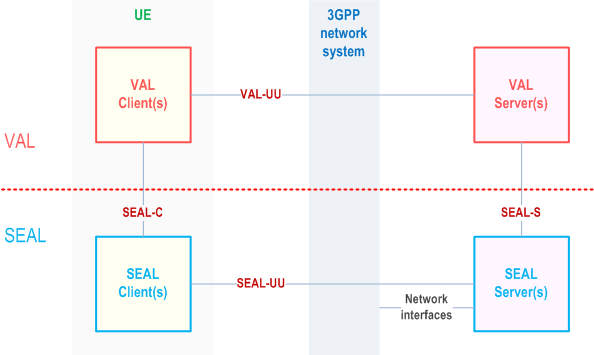
In the vertical application layer, the VAL client communicates with the VAL server over VAL-UU reference point. VAL-UU supports both unicast and multicast delivery modes.
The SEAL functional entities on the UE and the server are grouped into SEAL client(s) and SEAL server(s) respectively. The SEAL consists of a common set of services (e.g. group management, location management) and reference points. The SEAL offers its services to the vertical application layer (VAL).
The SEAL client(s) communicates with the SEAL server(s) over the SEAL-UU reference points. SEAL-UU supports both unicast and multicast delivery modes. The SEAL client(s) provides the service enabler layer support functions to the VAL client(s) over SEAL-C reference points. The VAL server(s) communicate with the SEAL server(s) over the SEAL-S reference points. The SEAL server(s) may communicate with the underlying 3GPP network systems using the respective 3GPP interfaces specified by the 3GPP network system.
The specific SEAL client(s) and the SEAL server(s) along with their specific SEAL-UU reference points and the specific network interfaces of 3GPP network system used are described in the respective on-network functional model for each SEAL service.
Figure 6.2-2 illustrates the functional model for interconnection between SEAL servers.
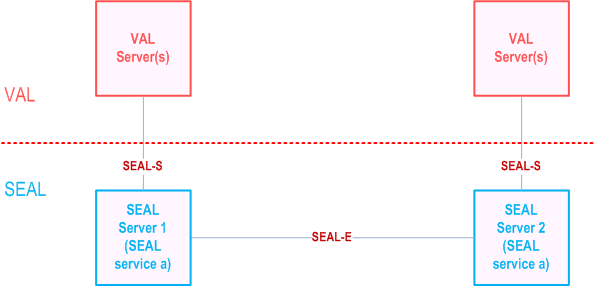
To support distributed SEAL server deployments, the SEAL server interacts with another SEAL server for the same SEAL service over SEAL-E reference point.
Figure 6.2-3 illustrates the functional model for inter-service communication between SEAL servers.
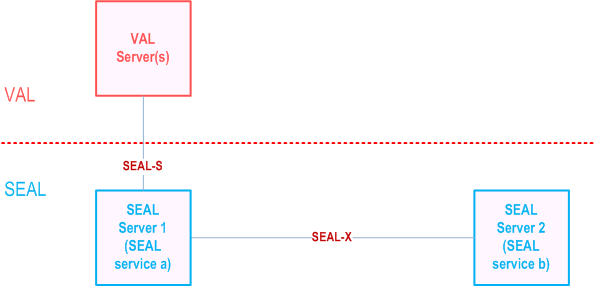
The SEAL server interacts with another SEAL server for inter-service communication over SEAL-X reference point.
Figure 6.2-4 illustrates the functional model for communication between SEAL server and VAL user database.
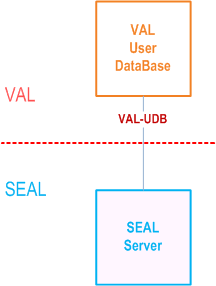
The SEAL server interacts with the VAL user database for storing and retrieving user profile over VAL-UDB reference point.
Figure 6.2-5 shows the functional model for the signalling control plane.
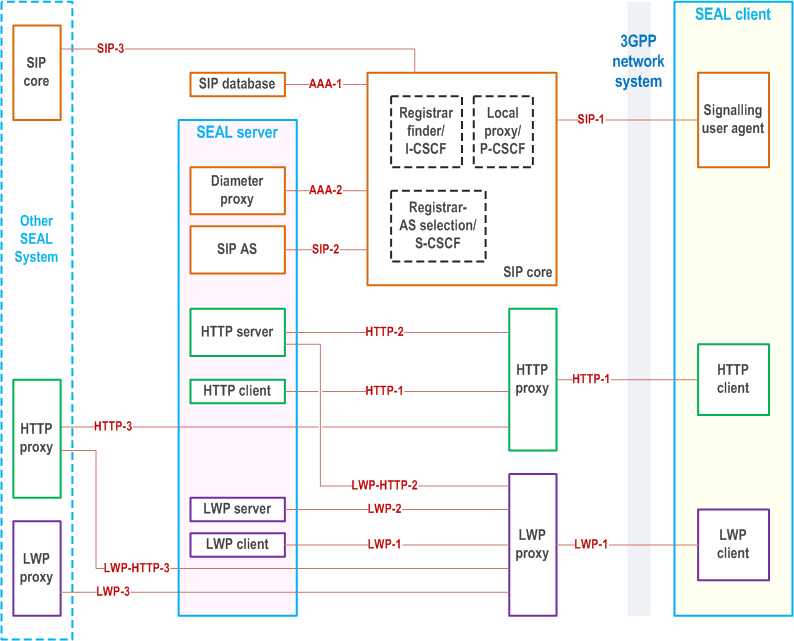
6.3 Off-network functional model description p. 30
Figure 6.3-1 illustrates the generic off-network functional model for SEAL.
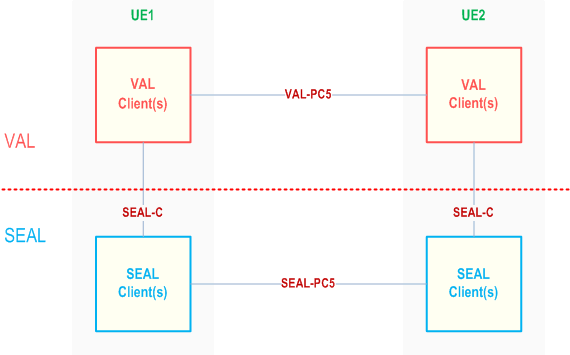
In the vertical application layer, the VAL client of UE1 communicates with VAL client of UE2 over VAL-PC5 reference point. A SEAL client of UE1 interacts with the corresponding SEAL client of UE2 over SEAL-PC5 reference points. The UE1, if connected to the network via Uu reference point, can also act as a UE-to-network relay, to enable UE2 to access the VAL server(s) over the VAL-UU reference point.
The specific SEAL client(s) along with their specific SEAL-PC5 reference points are described in the respective off-network functional model for each SEAL service.